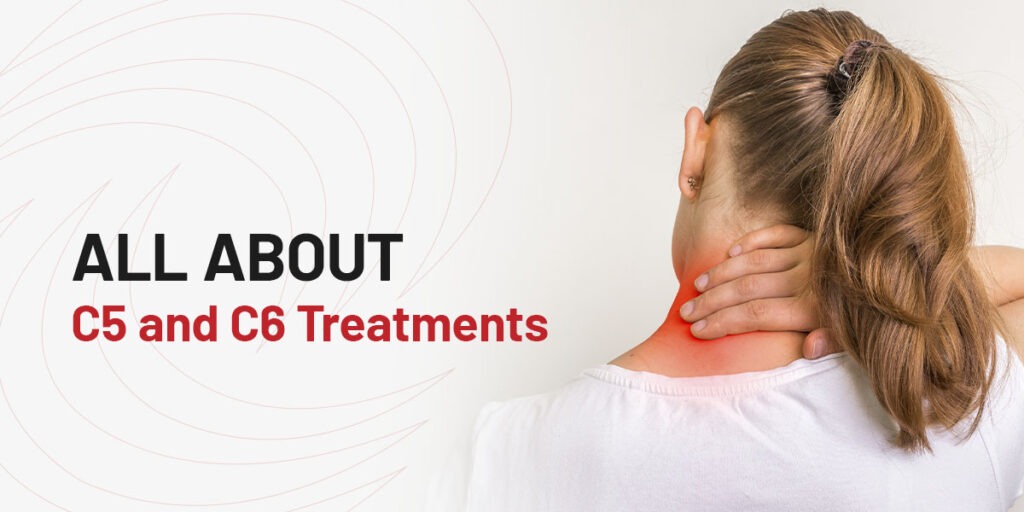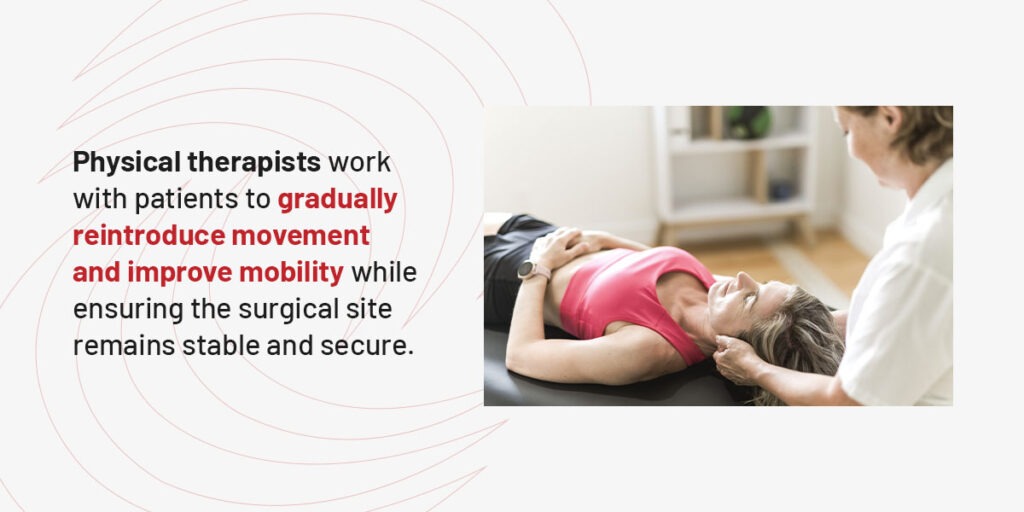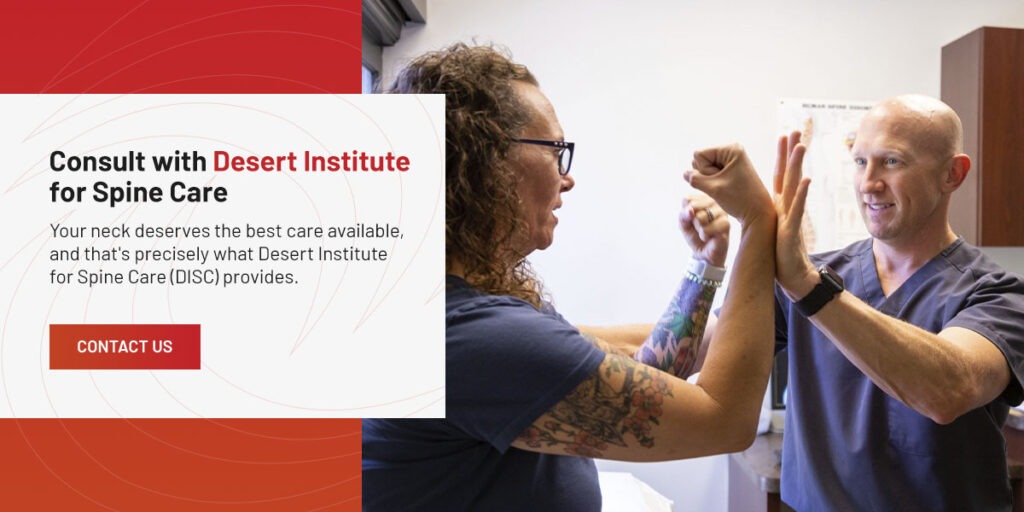
Each vertebra plays a role in supporting the body’s structure and facilitating movement. In this article, we will look at the cervical vertebrae, which comprise the upper portion of the spine. Specifically, the fifth (C5) and sixth (C6) vertebrae, as they hold special significance.
C5, the fifth cervical vertebra, finds its position just below C4 and above C6. Its structural makeup includes a vertebral body and a vertebral arch. It is responsible for the processes, like spinous and transverse, that serve as anchor points for muscles and ligaments. At the C5 level, nerve roots emerge from the spinal cord, forming a part of the brachial plexus — a complex network of nerves governing movement and sensation in the arms and hands.
Underneath the C6, the sixth cervical vertebra features a vertebral body, vertebral arch and associated processes that provide structural support to the spine. Nerve roots originating from C6 are involved in the brachial plexus, influencing the functionality of the upper limbs, including arm and hand movement and sensation.
Conditions involved with the C5 and C6 are disc herniation, degenerative changes and nerve compression, which can lead to symptoms like neck pain, arm pain, weakness and numbness.
Nonsurgical treatments offer several advantages, so healthcare professionals often recommend them over surgical options. Here are a few of those benefits:
Nonsurgical treatment options offered to patients depend on their history and the severity of the issue. Here are some options a healthcare professional might suggest:
The choice of C5 C6 surgery conditions depends on various factors, including the specific diagnosis and the patient’s overall health and preferences. Individuals must thoroughly discuss with their healthcare providers to determine the most appropriate surgical approach tailored to their unique needs and circumstances.
While non-surgical treatments can effectively address many C5 and C6 spine conditions, there are instances where surgical intervention becomes necessary to alleviate C5 C6 symptoms and prevent further complications. Here, we explore some standard surgical procedures:
ACDF is a common surgical procedure to address herniated discs, spinal stenosis and degenerative disc disease at the C5 and C6 levels. During the procedure, the damaged disc or portion of the disc is removed, and a bone graft is inserted to promote fusion between the adjacent vertebrae.
This surgical option involves removing the disc between C5 and C6 and replacing it with an artificial disc replacement via surgery. This artificial disc mimics a healthy disc’s natural movement and function. It can be a suitable alternative to fusion for certain patients.
In a posterior foraminotomy, surgeons access the C5 and C6 regions from the back of the neck. They remove bone and tissue to enlarge the neural foramen, the openings where nerve roots exit the spine. This procedure can relieve pressure on nerve roots caused by conditions like foraminal stenosis.
A laminectomy involves the removal of a portion of the vertebral arch (lamina) to create more space within the spinal canal. It aims to relieve pressure on the spinal cord and nerve roots, reducing pain and neurological symptoms.
Fusion procedures involve the fusion of adjacent vertebrae at the C5 and C6 levels using bone grafts or cages and plates and screws. Fusion is typically recommended when there is instability in the cervical spine due to conditions like severe degeneration, trauma or tumor removal.
Recovery and rehabilitation phases optimize healing, restore functionality and help patients regain their quality of life.
The duration of the hospital stay after surgical treatment for C5 and C6 conditions varies depending on the procedure and individual factors. Some surgeries require only a brief hospitalization, while others require a more extended monitoring stay. There are a number of C5 C6 pain treatments as follows:

Physical therapists work with patients to gradually reintroduce movement and improve mobility while ensuring the surgical site remains stable and secure.
After completing the initial recovery and rehabilitation phases, individuals should continue to prioritize their spinal health. This includes maintaining a healthy lifestyle, practicing good posture and staying active. Regular follow-up appointments with health care providers help monitor progress and address any concerns.
Recovery and rehabilitation after surgical treatment for C5 and C6 spine conditions require patience and commitment. With the guidance of skilled health care professionals and a proactive approach to healing, individuals can often significantly improve their spinal health and overall well-being.
By adopting proactive measures and making mindful choices, individuals can reduce the risk of developing spine issues and manage existing conditions more effectively. Here are some strategies for prevention and lifestyle adjustments that promote the well-being of the C5 and C6 vertebrae:

The cervical spine, a remarkable region composed of seven vertebrae, gives us the extraordinary ability to move our heads precisely and gracefully. Yet, as with any intricate structure, it is not immune to wear and tear. Neck pain is a concern for 80% of the population at some point in their life.
Your neck deserves the best care available, and that’s precisely what Desert Institute for Spine Care (DISC) provides. Don’t let neck pain hold you back— contact us to schedule an appointment today. Your journey to a pain-free life begins here.